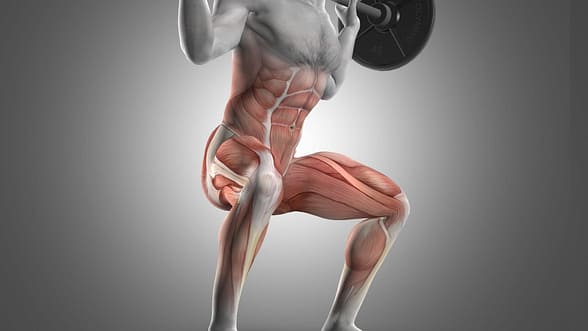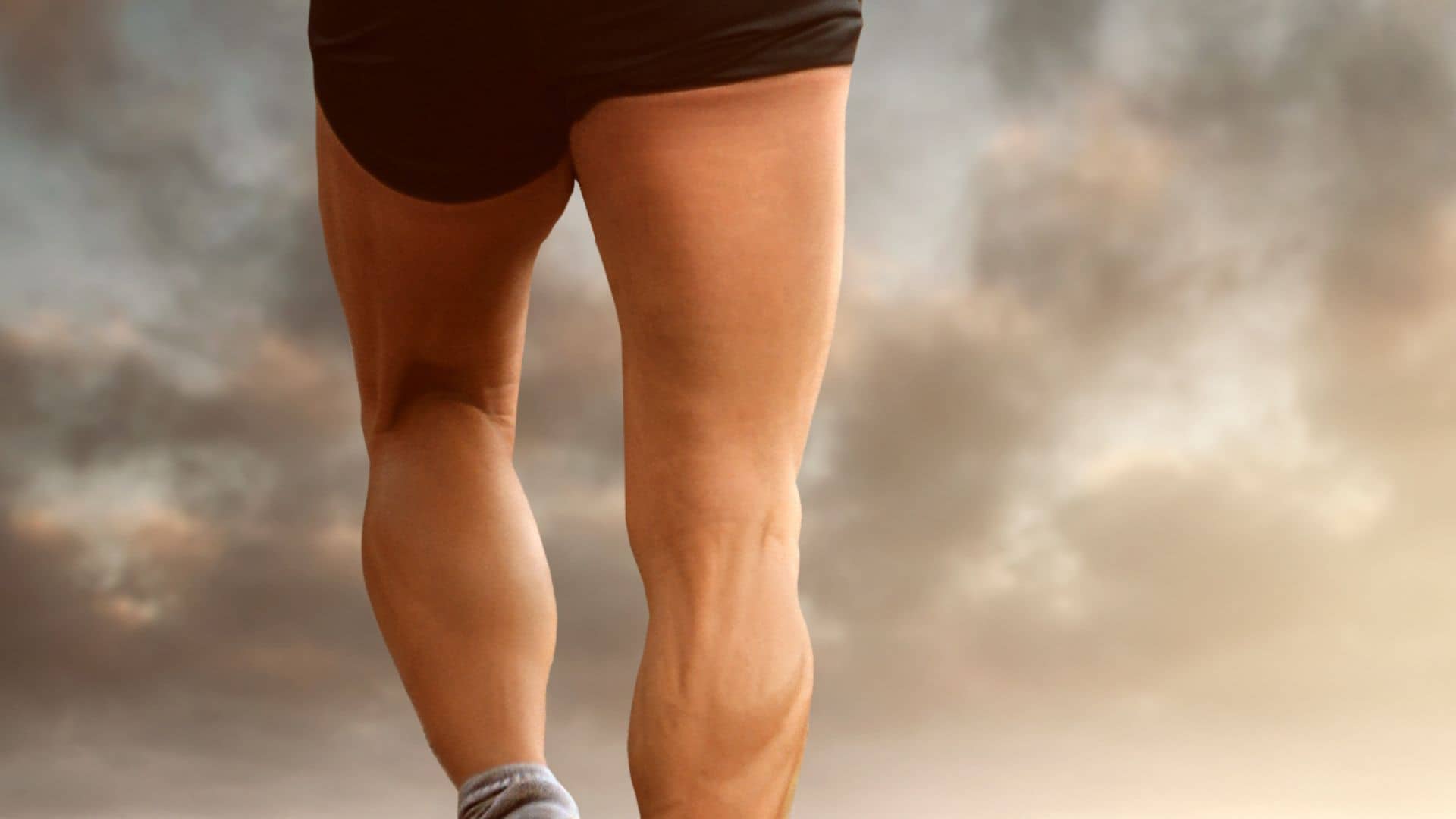If you’ve ever done squats, you may have noticed a burning sensation in your calves. It’s a common occurrence and can leave you wondering why squats, which primarily target the muscles in your thighs and glutes, also affect your calves. In this article, we’ll explore the reasons behind this phenomenon and shed light on why squats make you feel a burn in your calves.
Squats may cause a burn in your calves due to the need for stabilization and balance. As you lower your body, your calves engage to prevent tipping forward, creating muscle activation and a burn sensation. Additionally, limited ankle mobility can lead to compensatory movements, putting extra stress on the calves. Adjusting foot positioning and improving ankle flexibility can help alleviate the burn in your calves during squats.
Remember, if you experience persistent pain or discomfort in your calves or any other part of your body during exercise, it’s advisable to consult with a healthcare professional or a qualified fitness trainer for personalized advice.
Muscle Activation.
During squats, your body weight is centered over your feet. To maintain balance and stability, it’s important to distribute the weight evenly and keep your body aligned. Your calf muscles play a role in this stabilization process.
As you lower your body down into a squat, your center of gravity shifts. This change in balance can potentially cause your body to tip forward if not controlled.
To prevent this forward movement, your calves contract and engage to counteract the tendency to fall forward.
By activating your calf muscles, you create a force that helps maintain your balance and keeps your body from leaning too far forward.
This is particularly important when performing squats, as it ensures that you maintain proper form and stability throughout the exercise.
Additionally, the calves contribute to ankle stability. As you descend into a squat, your ankle joint undergoes flexion.
The calf muscles, specifically the gastrocnemius and soleus muscles, are responsible for plantarflexion, which is the movement that points your toes downward.
This movement helps stabilize your ankle joint and supports your body weight during squats.
While the primary focus of squats is on the quadriceps and glutes, the calf muscles come into play to assist with balance and stability.
This is why you may feel some activation and a burn in your calves when performing squats, especially if your form is correct and your weight is distributed properly.
Foot Positioning.
The position of your feet during squats can have an impact on the muscles that are primarily engaged. Specifically, it can affect the emphasis placed on different areas of your legs, including the calves.
When performing squats, the most common foot position is to have your feet shoulder-width apart, with toes pointing slightly outward.
This positioning helps promote stability and proper alignment of your body throughout the movement. It also allows for optimal engagement of the quadriceps and glutes.
However, depending on how you position your feet, you may experience variations in muscle activation. If your toes are pointing more forward or inward (referred to as a narrow stance), it can decrease the demand on your calves and shift more emphasis to your quadriceps and glutes.
This is because a narrower stance reduces the degree of ankle flexion and limits the involvement of the calf muscles.
On the other hand, if your toes are pointing more outward (referred to as a wide stance), it can increase the involvement of the calf muscles.
A wider stance places more stress on the ankle joint, which requires the calves to work harder to stabilize and maintain proper form during the squat.
Therefore, the position of your feet during squats can influence the level of calf muscle engagement and the potential burn you may feel in that area.
Experimenting with different foot positions can help you find the stance that feels most comfortable and targets the desired muscle groups effectively.
Remember, it’s important to maintain proper form and alignment regardless of your foot positioning.
If you experience any pain or discomfort during squats, adjust your technique or consult with a fitness professional to ensure you’re performing the exercise safely and effectively.

Ankle Mobility.
Limited ankle mobility refers to a decreased range of motion in your ankle joint, specifically in the dorsiflexion movement (bringing your toes closer to your shin).
When you have restricted ankle mobility, it can affect your squat form and lead to compensatory movements that put excessive stress on your calves.
During a squat, proper form involves maintaining an upright torso while lowering your body down. This requires the ability to flex your ankles and keep your heels firmly planted on the ground.
However, if your ankles lack flexibility, it becomes challenging to achieve this position, and compensations occur.
To compensate for limited ankle dorsiflexion, your body may shift forward, causing your weight to shift onto the balls of your feet rather than your heels.
This forward shift creates a demand for increased calf muscle activation to help stabilize your body and prevent you from falling forward during the squat.
As a result, your calves are placed under additional stress and work harder than they would with normal ankle mobility. This increased workload can lead to a burn sensation in the calves during squats.
To address limited ankle mobility and reduce calf strain during squats, you can focus on improving ankle flexibility through stretching and mobility exercises.
Some common exercises that can help improve ankle mobility include ankle dorsiflexion stretches, calf stretches, and foam rolling.
Incorporating these exercises into your regular routine can gradually increase the range of motion in your ankles, allowing for better squat form and reducing the strain on your calves.
Additionally, consulting with a healthcare professional or a qualified fitness trainer may provide you with specific exercises and guidance tailored to your needs.
Here’s a tabular breakdown of the key points regarding the topics of “why, how, when, where, example, and what to consider” related to squats:
| Topic | Why | How | When | Where | Example | What to Consider |
|---|---|---|---|---|---|---|
| Why | Strengthen leg and glute muscles, improve overall lower body strength, enhance functional movement. | Perform compound exercise targeting multiple muscles. | As part of a well-rounded fitness routine. | Any gym or fitness facility with proper equipment. | Doing squats to develop stronger quads and glutes. | Consider personal fitness goals and physical limitations. Warm up adequately. Start with appropriate weight and form. |
| How | Proper form and technique, focusing on maintaining balance, hip hinge, and keeping the weight on heels. | Begin with feet shoulder-width apart, descend by bending hips and knees, keeping the back straight, and pushing through the heels to return to the starting position. | Control the movement, engage core muscles, and breathe properly. | Follow a progressive overload approach, increasing weight and intensity gradually. | Squatting with a barbell on the back. | Seek guidance from a fitness professional if unsure about technique. |
| When | During strength training sessions, leg-focused workouts, or as part of a full-body routine. | Incorporate squats based on fitness goals and training program. | Prioritize compound exercises earlier in the workout when energy levels are higher. | Avoid squatting when fatigued or recovering from an injury. | Including squats in a lower body workout. | Listen to the body and allow for proper rest and recovery between sessions. |
| Where | Gym, fitness facility, home with appropriate equipment. | Utilize squat racks, barbells, dumbbells, or bodyweight variations. | Access to necessary equipment and space. | Ensure a safe and well-maintained environment. | Squatting in a designated squat rack. | Familiarize yourself with the equipment and ensure proper safety measures are in place. |
| Example | Performing barbell back squats, goblet squats, or bodyweight squats. | Choose a variation based on equipment availability and fitness level. | Incorporating squats into leg day or full-body workouts. | Any suitable space with proper equipment. | Doing bodyweight squats during a home workout. | Adapt the exercise to your fitness level and progress gradually. |
| Consider | Consider personal fitness goals, current strength, and mobility levels. | Warm up adequately, use appropriate weights, and maintain proper form. | Adapt squats based on individual limitations or injuries. | Take into account space, safety, and equipment requirements. | Adjusting squat depth and intensity based on fitness level. | Listen to your body, seek professional advice if needed, and focus on gradual improvement. |
Please note that this table provides a general overview and it’s essential to tailor your approach to your individual needs, capabilities, and goals.
Conclusion.
In conclusion, feeling a burn in your calves during squats can be attributed to various factors.
While squats primarily target the quadriceps and glutes, the calves can also come into play due to their role in stabilizing the body and maintaining balance.
Factors such as muscle activation, foot positioning, and ankle mobility can contribute to calf engagement and the burning sensation experienced during squats.
Understanding the mechanics of squats and paying attention to proper form and alignment can help distribute the workload more evenly across the leg muscles, potentially reducing strain on the calves.
Adjusting foot positioning, focusing on maintaining balance on the heels, and improving ankle mobility through stretches and exercises can also alleviate the burn in the calves.
Remember, everyone’s body is unique, and it’s essential to listen to your body, adjust your technique as needed, and seek guidance from professionals if you experience persistent pain or discomfort.
With practice and proper attention to form, you can optimize your squat performance and minimize discomfort in the calves.

Hey there, it’s Mike Rrsq, the Editor-in-Chief over at Jsquat.com, and I’m absolutely obsessed with all things squat fitness! I’ve been lucky enough to get some serious recognition for my work in this field. With a solid background in the fitness and wellness industry, I’ve been there right from the get-go, helping shape this website into what it is today.
You see, I’m not just the boss around here; I’m also a passionate contributor. I love sharing my insights through my articles, and trust me, they’re not your run-of-the-mill stuff. Each piece I write is a labor of love, filled with my expertise and real-world experience in the fitness universe. So, if you’re into fitness and looking for some inspiration, you’re in the right place!


